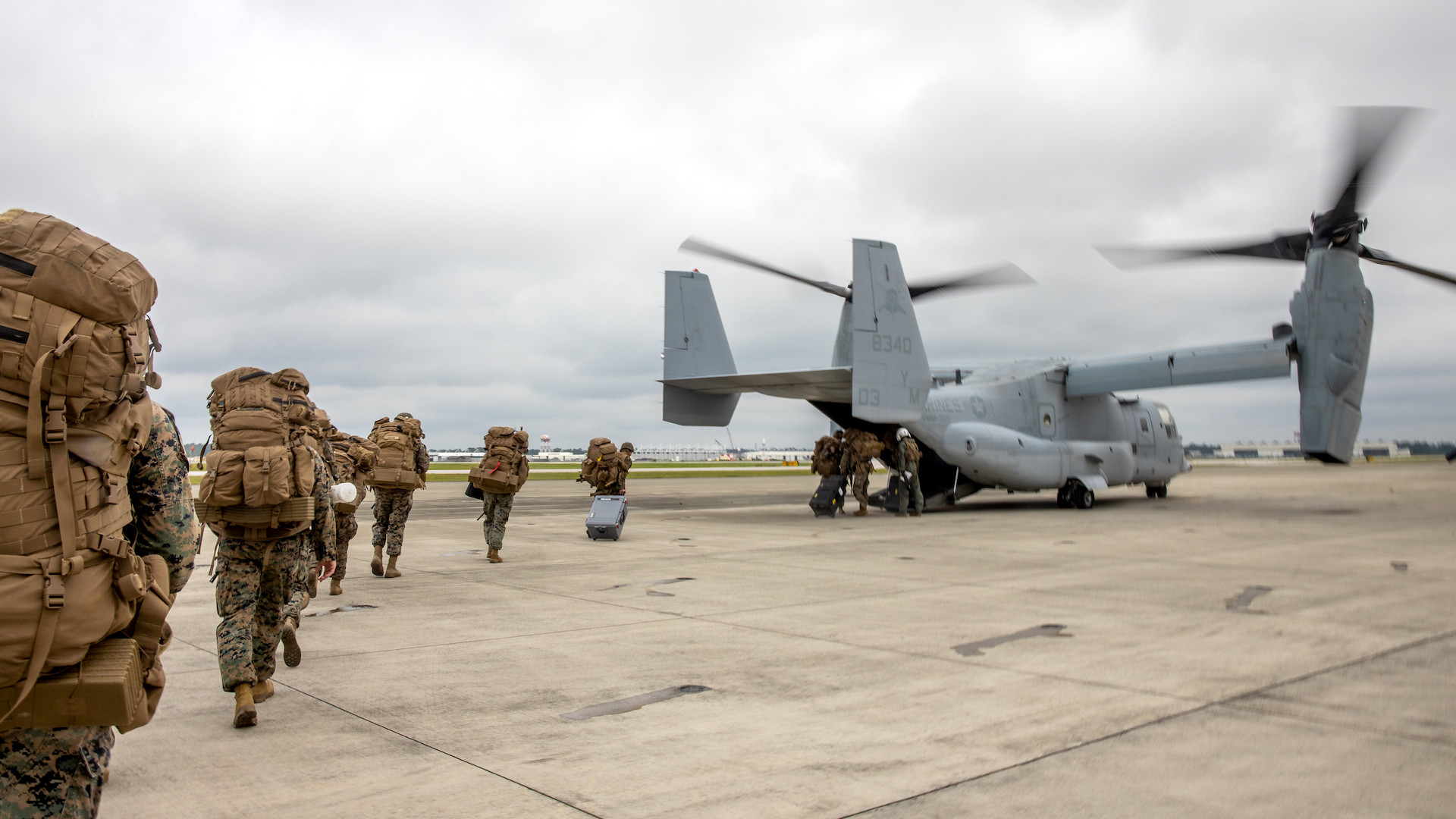

A “small task-organized element” of Marines has deployed to the U.S. Central Command area of operations to provide air defense support in the region, the Marine Corps announced on Saturday.
The element consists of 20 Marines from the 26th Marine Expeditionary Unit who will “will temporarily provide routine air defense support to a larger, layered air-defense effort” within the CENTCOM area, a Marine Corps spokesman told Marine Corps Times, which first reported the size and mission of the deployment.
Based at Camp Lejeune, North Carolina, and part of the II Marine Expeditionary Force, the 26th MEU is currently entering “the final stage of its pre-deployment training program” ahead of a formal deployment to “the tri-COCOM region, including EUCOM, AFRICOM and CENTCOM,” the Corps said in a statement.
The CENTCOM AOR consists of 21 countries in and around the Middle East, and while the Corps is keeping the details of the deployment vague in the name of operational security, a spokesman did confirm to Marine Corps Times that the deployment “has no direct connection to the ongoing situation in Sudan” which has seen the U.S. military swoop in to evacuate Americans over the last several weeks.
Coincidentally, the 26th MEU conducted non-combatant evacuation operations training just days before the announcement of the element’s deployment amid the Sudan evacuation push.
Subscribe to Task & Purpose Today. Get the latest military news, entertainment, and gear in your inbox daily.
It’s worth noting that news of the 26th MEU element’s air defense deployment comes on the heels of air defense unique training by the expeditionary unit in the littorals of eastern Virginia and North Carolina in late January that saw Marines strap several specialized counter-drone systems to the deck of an amphibious warship during a simulated defense of amphibious task force (DATF) exercise.
Those counter-drone systems included a rare Light Armored Vehicle-Electronic Warfare variant (LAV-EW) and a Light Marine Air Defense Integrated System (L-MADIS) array mounted on a Counter Unmanned Aerial Surveillance Utility Task Vehicle, with both vehicles strapped to the deck of the Navy amphibious assault ship USS Bataan.
Both systems are designed to knock explosive-laden drones out of the sky by disrupting their electronics or neutralizing their communications with operators elsewhere, a critical capability given the rise of commercial off-the-shelf drone systems in the Middle East that some U.S. military leaders have called the biggest threat to U.S. troops in the region since the advent of the improvised explosive device.
Indeed, the January LAV-EW and L-MADIS experiment aboard the Bataan marked the 26th MEU’s first time experimenting with these new air defense concepts “in accordance with Force Design 2030 for our upcoming deployment to the Fifth and Sixth fleets areas of operations,” an expeditionary unit spokesman told Task & Purpose at the time.
It’s unclear if these unique air defense assets were part of the Marine element’s new deployment, but with more and more expeditionary units experimenting with counter-drone systems during pre-deployment exercises, it likely won’t be long until we see Marine grunts flexing their electronic warfare muscles in the CENTCOM region — something the Corps appeared to implicitly acknowledge in its announcement.
The 26th MEU “serves as one of the Nation’s premier crisis response forces capable of conducting amphibious operations, crisis response, and limited contingency operations,” according to the Marine Corps. “Coupled with the [Bataan Amphibious Ready Group], the 26th MEU serves as a premier stand-in force with a full complement of all-domain capabilities to operate persistently within the littorals or weapons engagement zones of an adversary.”
The latest on Task & Purpose
- USS George HW Bush aircraft carrier rocks battle flag on return home from deployment
- Accused Air Force intel leaker Jack Teixeira’s bedroom is the most cringe thing we’ve ever seen
- The Navy wants to sell off its troubled littoral combat ships to allies after just a few years in service
- The beloved A-10 Warthog has a brand new role: bomb truck
- Army National Guard team wins this year’s International Sniper Competition